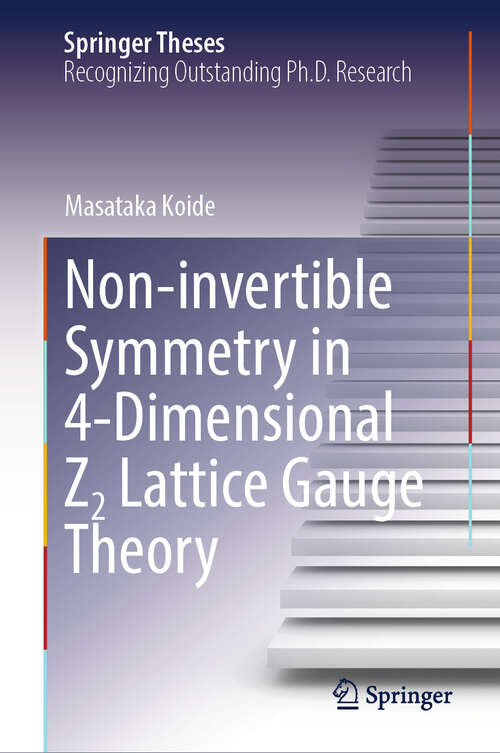Non-invertible Symmetry in 4-Dimensional Z2 Lattice Gauge Theory (Springer Theses)
By:
Sign Up Now!
Already a Member? Log In
You must be logged into Bookshare to access this title.
Learn about membership options,
or view our freely available titles.
- Synopsis
- This book provides a method for concretely constructing defects that represent non-invertible symmetries in four-dimensional lattice gauge theory. In terms of generalized symmetry, a symmetry is considered to be equivalent to a topological operator whose value does not change even if the shape is topologically transformed. Even for models that lack symmetry in the traditional sense and are difficult to analyze, it is possible to analyze them as long as a generalized symmetry exists. Therefore, generalized symmetry is important for the non-perturbative analysis of quantum field theory. Some topological operators have no group structure, and the corresponding symmetries are called non-invertible symmetries. Concrete examples of non-invertible symmetries in higher-dimensional theories were discovered around 2020, and they have been actively studied as a field of generalized symmetries since then. This book explains the non-invertible symmetry represented by the Kramers-Wannier-Wegner duality, which was found firstly in a four-dimensional theory, represented by three-dimensional defects. This book is intended for those with preliminary knowledge of quantum field theory and statistical mechanics.
- Copyright:
- 2025
Book Details
- Book Quality:
- Publisher Quality
- ISBN-13:
- 9789819622726
- Related ISBNs:
- 9789819622719
- Publisher:
- Springer Nature Singapore
- Date of Addition:
- 05/20/25
- Copyrighted By:
- The Editor
- Adult content:
- No
- Language:
- English
- Has Image Descriptions:
- No
- Categories:
- Nonfiction, Science, Earth Sciences, Mathematics and Statistics
- Submitted By:
- Bookshare Staff
- Usage Restrictions:
- This is a copyrighted book.
Reviews
Other Books
- by Masataka Koide
- in Nonfiction
- in Science
- in Earth Sciences
- in Mathematics and Statistics
